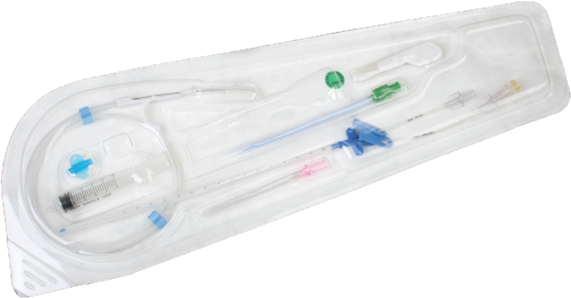
Central Venous Catheter Kit
Central venous catheter kit are used for long-term central venous access in intensive infusion and/or transfusion therapy, invasive central venous pressure measurement. They are usually made up of a variety of components that are necessary to provide control over the process of care. Find out more in this article with our comprehensive guide to central venous catheter kits!
Different kits are available
A central venous catheter kit is a medical device that is used to access the central veins of the body. It is made up of a long, thin tube that is inserted into a vein in the neck or chest, and a number of smaller tubes that are attached to it. The kit also contains a syringe and a needle for injecting medication or drawing blood. Central venous catheters are used when intravenous access is required but the veins in the arms are not suitable. They are also used when intravenous fluids need to be given over a long period of time, or when frequent blood tests need to be taken. The risks associated with central venous catheters include infection, bleeding, and damage to the vein. These risks can be reduced by using sterile techniques when inserting the catheter, and by taking care to clean the skin around the insertion site.
There are a variety of central venous catheter kits available on the market, each designed for a specific purpose. The most common types of central venous catheters are:
PICC Lines: A PICC line is a long, thin tube that is inserted through a vein in the arm and passed through to the larger veins near the heart. PICC lines are often used when patients need long-term intravenous access, such as during chemotherapy treatment.
Midline Catheters: A midline catheter is a shorter tube that is inserted through a vein in the arm and passed through to the larger veins near the heart. Midline catheters are often used when patients need short-term intravenous access, such as during hospital stays.
Implanted Ports: An implanted port is a device that is surgically placed under the skin, usually in the chest area. A small tube runs from the port to a vein, allowing for easy access to the bloodstream. Implanted ports are often used when patients need long-term intravenous access, such as during chemotherapy treatment.
There are a few factors that you should consider when choosing a central venous catheter (CVC) kit.
The first is the type of CVC you need. There are two main types of CVCs: peripherally inserted central catheters (PICCs) and tunneled catheters. PICCs are inserted through a vein in your arm and are often used for short-term treatment. Tunneled catheters are inserted through a vein in your chest and are often used for long-term treatment.
The second factor to consider is the size of the CVC you need. CVCs come in various sizes, from 8 French (Fr) to 20 Fr. The size you need will be determined by your healthcare provider based on the type of treatment you're receiving and your individual body size.
The third factor to consider is the material of the CVC you need. CVCs can be made from silicone, polyurethane, or polyvinyl chloride (PVC). Silicone is the most flexible material and is often used for children or adults who require frequent movement or position changes. Polyurethane is less flexible than silicone but more durable, making it a good choice for adults who require long-term treatment. PVC is the least flexible material but is the most affordable, making it a good choice for adults who require short-term treatment.